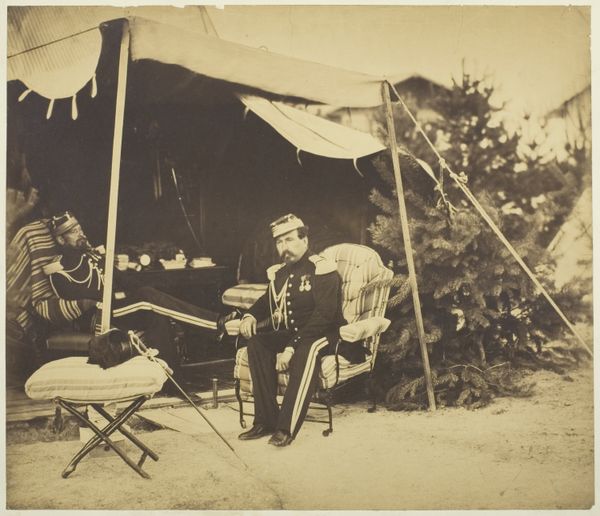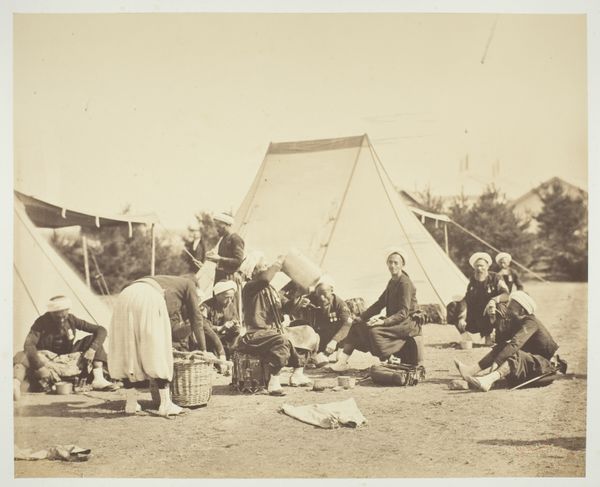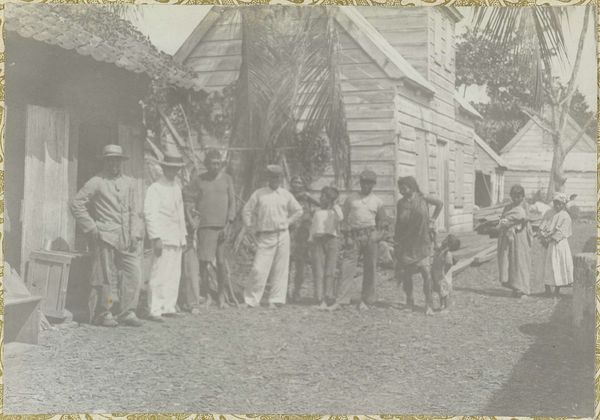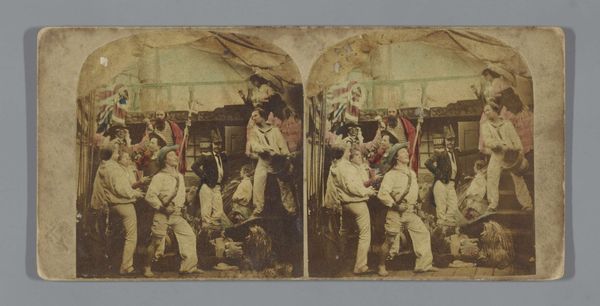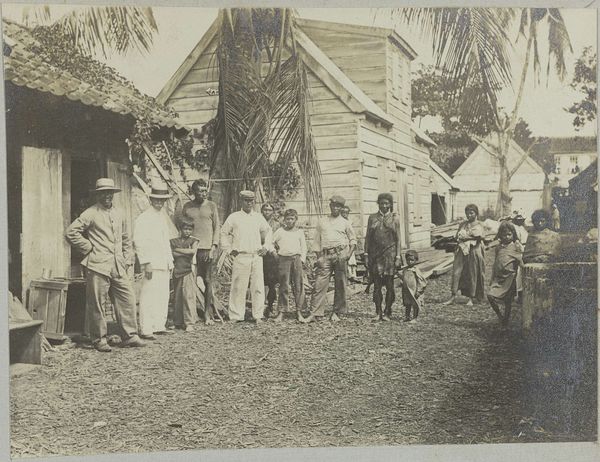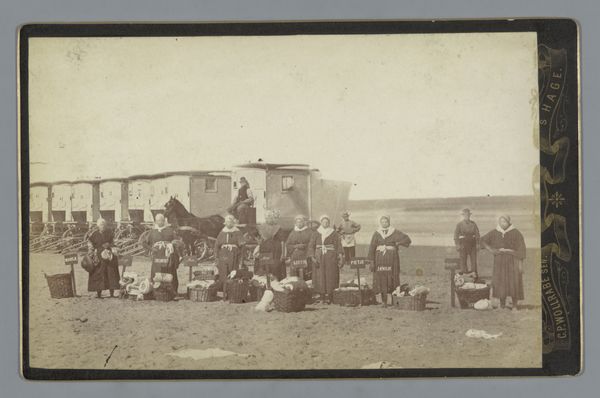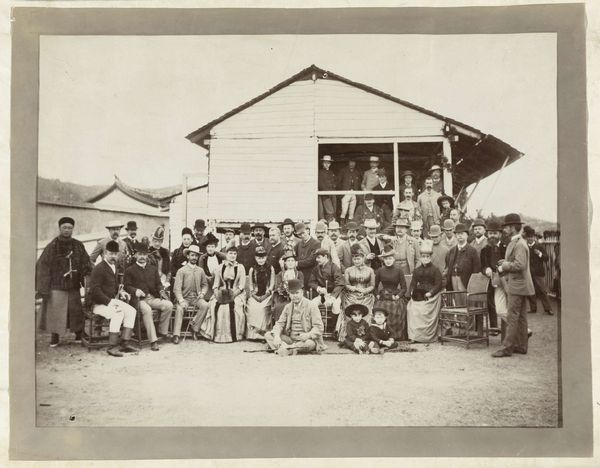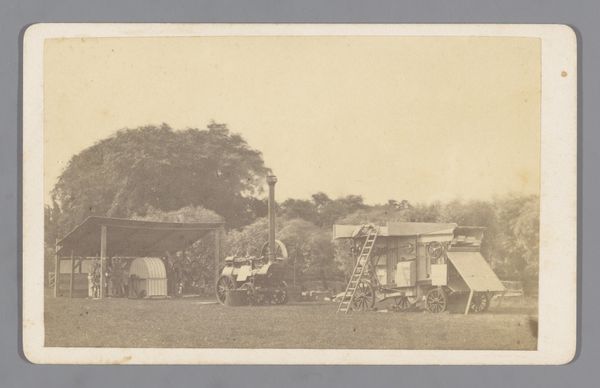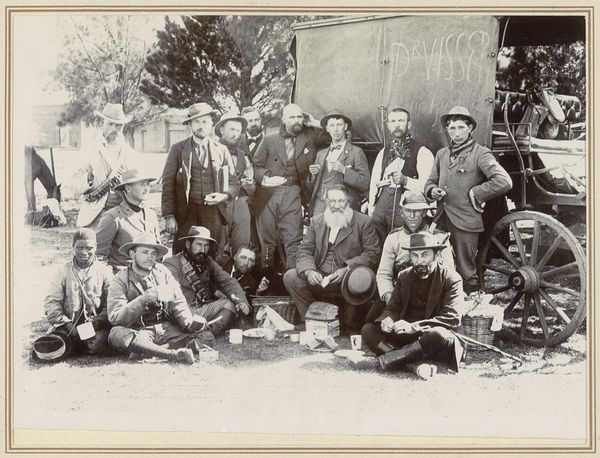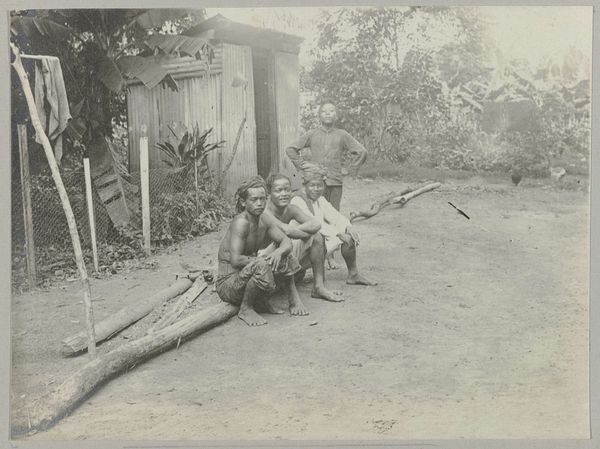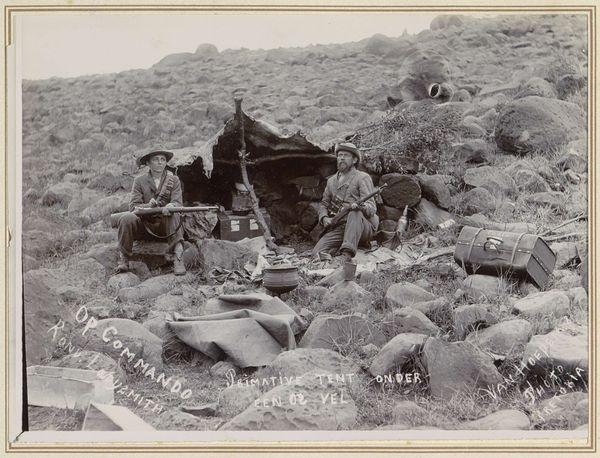
Chief Officer and Clerks of the Ambulance Department, 9th Army Corps, in Front of Petersburg, Virginia 1864
0:00
0:00
photography, gelatin-silver-print
#
portrait
#
war
#
photography
#
soldier
#
group-portraits
#
gelatin-silver-print
#
19th century
#
men
#
ashcan-school
#
history-painting
#
realism
Dimensions: Image: 6 7/8 × 8 7/8 in. (17.5 × 22.5 cm) Mount: 10 5/16 × 15 1/16 in. (26.2 × 38.2 cm)
Copyright: Public Domain
Curator: This arresting gelatin silver print, dating to 1864, captures the “Chief Officer and Clerks of the Ambulance Department, 9th Army Corps, in Front of Petersburg, Virginia” by Timothy O'Sullivan. It's currently held at The Metropolitan Museum of Art. Editor: What strikes me immediately is the composition. The arrangement of the figures, some relaxed, some posed, creates a tableau of weary authority. There's a strong diagonal created by the seating arrangement leading to the backdrop, a crude shelter that feels almost performative. Curator: Absolutely. Consider the material reality of the war effort—O'Sullivan’s image wasn't created in a vacuum. It documents the administrative labor crucial to sustaining the Union Army, transforming logistical necessities into visual documents for public consumption and political capital. Think of the albumen print production process of the day and what it means in terms of cost, labor, and mass appeal. Editor: Indeed. Visually, I'm drawn to the contrast between the makeshift shelter and the crisp detail O'Sullivan achieves with his lens. The play of light and shadow accentuates the faces, revealing fatigue, confidence, boredom maybe even glimpses of humanity amidst the harsh realities of war. It evokes a kind of contained chaos in a static image. Curator: The composition belies the grim circumstances of the siege of Petersburg. These aren't heroic battlefield poses, but a portrait of logistical support: ambulance services and administrative order amid chaos. The officers represent the bureaucratic aspect of the war machine, while the inclusion of a Black attendant highlights labor hierarchies within the Union Army. It makes you ponder who made it into the frame, and who didn't? Editor: It is, in essence, an extremely powerful study in contrasts. Even the tonal range emphasizes that tension—the bleached-out sky versus the darker foreground, the almost theatrical propping up of the tree branches as makeshift cover. The medium enhances the emotional weight of the image. Curator: Looking at it in terms of material, it is important to acknowledge the intersection of artistic practice, bureaucratic function, and the machinery of war in O'Sullivan's photograph. The image speaks to how the apparatuses of both war and art are entangled and materially constructed. Editor: Agreed. It all brings us to reflect upon the formal structure. The tension between realism and staged performance reminds us that every photograph is an interpretation. O'Sullivan gives us both an authentic scene and a carefully arranged statement. Curator: Exactly. We observe an early instance of wartime photography. Editor: A somber reminder presented with compelling visual elements.
Comments
No comments
Be the first to comment and join the conversation on the ultimate creative platform.
